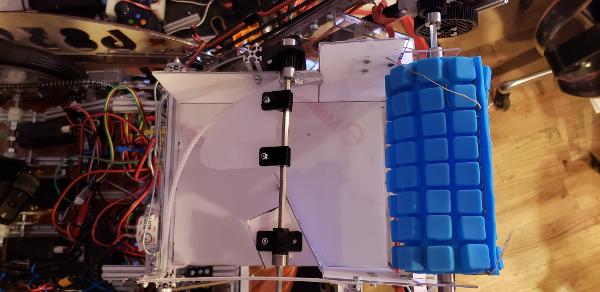Selective Intake
Tags: think and designPersonhours: 3
Task: Design a new sorting mechanism for gold and silver particles

The differentiation between the different shapes of minerals has been something we’ve been thinking about since day one. At the time we designed a box that allowed us to sort out blocks and balls by size, but weren't able to implement it. Our original selective intake only accepted balls so we only have to go to the one loading area, but our new design allows us to deliver both blocks and balls to their respected containers. It wasn’t implemented earlier because the robot just wasn’t tall enough. With our new belt drive, It’s possible to do.
This we decrease the difficulty of TeleOp for the drivers by increasing the speed of deposit while decreasing accuracy needed. The selective intake also has a door built into it, which holds back the minerals until we’re ready to deposit. Gravity does the rest of the work, letting the balls fall down into a brachistochrone, and letting the cubes fall through.
The other thing that we wanted to do was to have this process be almost completely mechanical, taking more stress off the drivers. The gate is released when a lever is pushed in and translated to a quicker motion with a pair of gears at a 2:1 ratio allowing for an easy deposit. The frame of the intake is made out of polycarb, bent with the sheet bender and cut into the correct form with the bandsaw.

The intake also uses our ice cube design from earlier in the season. It is compliant and with its new 3D-printed supports (Ninjaflex, 20% infill), it will be much more effective than the previous intake. This time, instead of stapling the thing together, we are sewing it shut, which should hopefully negate any problems the previous version had, such as coming apart where the two sides met. The intake will be offset a little from the ice tray intake to allow for as much grabbing action as possible.
Next Steps
Now we must allow the drive team as much time to practice with it as possible.
